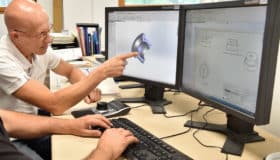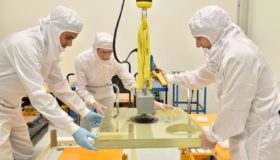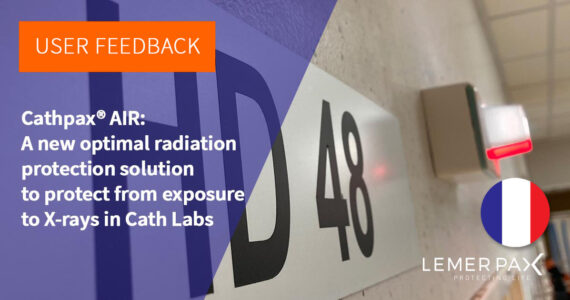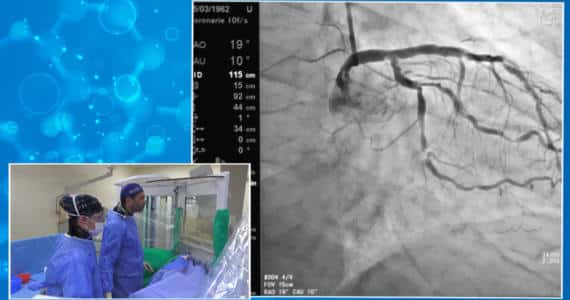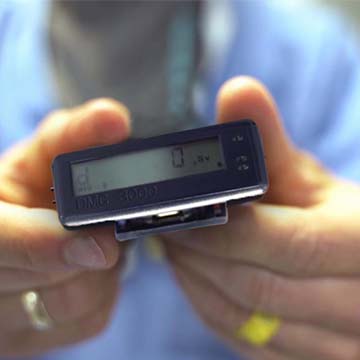
Concrete proof during a Live Case: the Cathpax® AIR radiation protection cabin once again proves effective in reducing X-ray exposure by 98% during a CTO procedure.
It is a known fact that interventional cardiologists are increasingly exposed to X-rays! Today, we can save the lives of others without being irradiated ourselves. The radiation protection cabin effectively protects interventional cardiologists from X-rays on all parts of the body.
The last Live Case in Faro, with the Cathpax® AIR cabin, confirms that the concept works, reducing X-ray exposure by more than 98%. The ambient radiation dose in the cabin remained almost the same as the background level in the room.
The Algarve University Hospital in Faro confirms the excellent results of Porto
A year ago, the medical team at the San Antonio Hospital in Porto tested the Cathpax® AIR radiation protection cabin with two dose probes, one placed outside and the other inside, on the left side of the cabin. Result: more than 98% reduction in ambient dose!
These very encouraging results were confirmed in 2021, during the procedures carried out under the responsibility of Dr Hugo Vinhas, at the Hospital Center in Faro. Practitioner exposure, measured with an operational dosimeter and using the Cathpax® Air radiation protection cabin, was close to zero.
The cabin has once again proven that it is effective for all body types and most C-Arm angulations. Importantly, Dr Hugo Vinhas was confident enough in the system to work in the Cathpax® AIR cabin without wearing a lead apron.

“Cathpax® AIR cabin is a piece of essential equipment for the cath lab. The cabin provides an optimal X-ray protection and prevents musculoskeletal problems for the operator since it possible to work without the use of the lead apron. I advise the use of the cabin in all interventional cardiology procedures.”
Dr. Hugo Vinhas, Head of Interventionnal Cardiology Unit of University Hospital Center of Algarve
Dr Vinhas shared the lessons learned from his procedures at the Annual Congress of APIC (Associação Portuguesa de Intervenção Cardiovascular) held from 14 to 16 October 2021. The title of the live case broadcast on this occasion is quite explicit: “Chronic total occlusion PCI: I can do it without radiating myself.”
CTO is a chronic total occlusion of a coronary artery. In interventional cardiology, treating CTO is a complex procedure that requires relatively prolonged exposure to ionizing radiation.
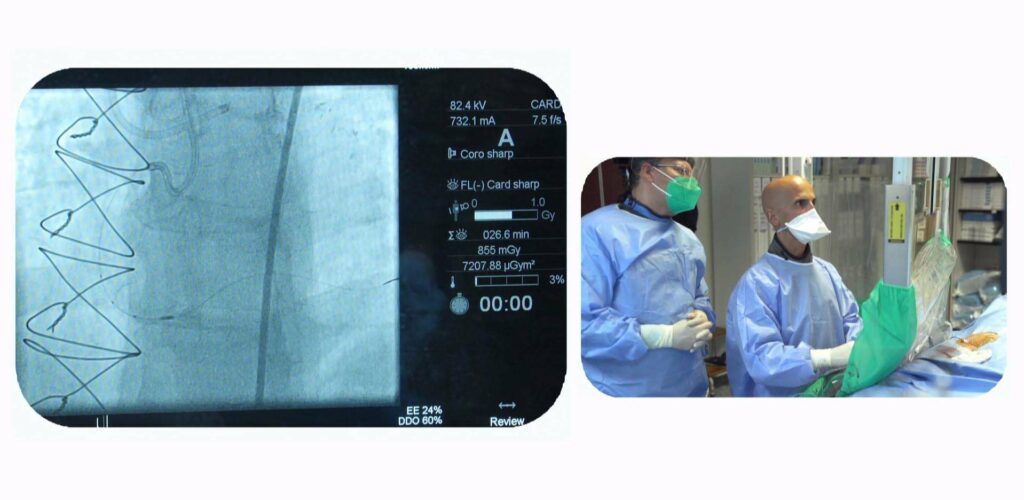
A much-needed new system
Interventional cardiology has experienced exceptional growth in recent years. The significant increase in the number and complexity of procedures (TAVI, Mitraclip, CTO, pulmonary valve implantation) has benefited patients. The unquestionable comfort they derive from these minimally invasive procedures has greatly contributed to the success of this technique. At the same time, this trend has put practitioners on the front line, with increasing exposure to X-rays over long periods of time.
Today, interventional physicians exposed to X-rays are aware that PPE and CPE (Personal and Collective Protection Equipment) provide only partial, inadequate protection[1], and they are looking for new solutions for radiation protection in the cath lab.
In order to provide a solution to this pressing need, Lemer Pax has worked in collaboration with Dr Patrice Guérin (Nantes University Hospital / France) and Dr David Keane (St Vincent University Hospital / Dublin / Ireland) to propose an all-new solution: a new generation of radiation protection cabins that meet the complex requirements of interventional cardiology: the Cathpax® AIR.
[1] Roguin A., Radiation and your Brain: possible measures to reduce radiation in your cath lab. Endovascular Today Vol. 15, No. 8 August 2016.
